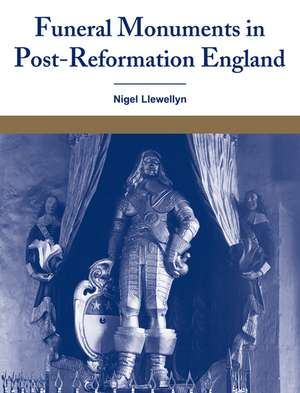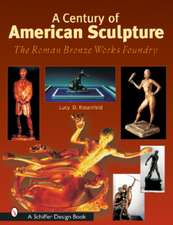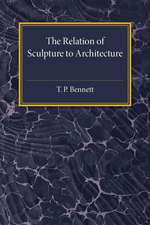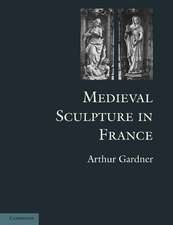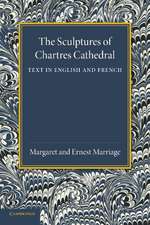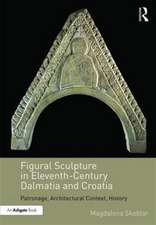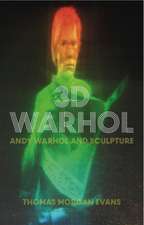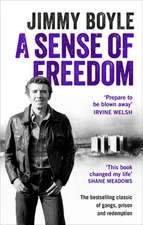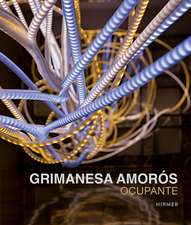Funeral Monuments in Post-Reformation England
Autor Nigel Llewellynen Limba Engleză Paperback – apr 2009
Preț: 462.96 lei
Nou
Puncte Express: 694
Preț estimativ în valută:
88.60€ • 92.16$ • 73.14£
88.60€ • 92.16$ • 73.14£
Carte tipărită la comandă
Livrare economică 15-29 aprilie
Preluare comenzi: 021 569.72.76
Specificații
ISBN-13: 9780521107525
ISBN-10: 0521107520
Pagini: 500
Ilustrații: 250 b/w illus. 6 maps
Dimensiuni: 189 x 246 x 26 mm
Greutate: 0.89 kg
Editura: Cambridge University Press
Colecția Cambridge University Press
Locul publicării:Cambridge, United Kingdom
ISBN-10: 0521107520
Pagini: 500
Ilustrații: 250 b/w illus. 6 maps
Dimensiuni: 189 x 246 x 26 mm
Greutate: 0.89 kg
Editura: Cambridge University Press
Colecția Cambridge University Press
Locul publicării:Cambridge, United Kingdom
Cuprins
List of illustrations; Acknowledgements; Preface; Part I. Historiography and the Discourse of Art History: 1. The antiquaries and the rule of taste; 2. Art history - nation and place; 3. Art history - the period; 4. Art history - artists and the theory of art; 5. Alternatives; 6. In the presence of death; 6. Differentiation, replication and portrayal; 7. Continuity and separation; 8. The Reformation; 9. Emotion and mourning; 9. Monuments to living people; 10. Conclusion; Part II. Form and Design: 1. Regional variation; 2. Medieval precedents; 3. England and Europe; 4. Changes through time; 5. The components of design; 6. Recumbent figures; 7. Standing, kneeling and seated figures; 8. Other poses and types; 9. Traditional compositions; 10. Inscriptions; 11. Allegories and histories; 12. Decoration, surface and painted finishes; Part III. Building Monuments: 1. Securing and maintaining a place; 2. The business of erecting a monument; 3. Transportation; 4. The tomb-makers and their materials; 5. Materials; Part IV. Habits and Skills in Visual Culture: 1. Descriptions; 2. Aesthetic and visual categories; 3. Hierarchies and dangers; 4. Image theory and religious controversy; 5. Iconoclasm; 6. The defence of monuments; Part V. Exemplifications: 1. Patrons and society; 2. Monuments and the state; 3. The expression of virtue; Part VI. Conclusion. Four Discourses: 1. The four discourses; 2. The architectural frame; 3. The effigial body; 4. The heraldic sign; 5. The inscribed word; 6. English art and the exemplary tradition; Notes; Bibliography; Documents and manuscripts in original and published forms; Printed materials; Index.
Recenzii
Review of the hardback: 'This is essential reading for art historians, social historians and even students of the politics and economics of the period.' The Art Newspaper
Review of the hardback: 'Dr Llewellyn is to be commended for establishing a new area of inquiry: the visual culture of churches and the practice of commemoration in early modern England.' Journal of Ecclesiastical History
Review of the hardback: 'This is undoubtedly an important work which will remain the standard text for the foreseeable future.' Renaissance Studies
Review of the hardback: 'Llewelyn's study has much to inform the serious 'Reformation' theologian.' Laudetur
Review of the hardback: 'Llewellyn's study explores the complexities and range of these ambitious works and persuasively argues for their importance as registers of shifting social attitudes and aspirations. this important book deserves the attention not merely of art historians, but of a far wider variety of scholars working on the material culture of post-medieval England.' Post-Medieval Archaeology
Review of the hardback: 'Dr Llewellyn is to be commended for establishing a new area of inquiry: the visual culture of churches and the practice of commemoration in early modern England.' Journal of Ecclesiastical History
Review of the hardback: 'This is undoubtedly an important work which will remain the standard text for the foreseeable future.' Renaissance Studies
Review of the hardback: 'Llewelyn's study has much to inform the serious 'Reformation' theologian.' Laudetur
Review of the hardback: 'Llewellyn's study explores the complexities and range of these ambitious works and persuasively argues for their importance as registers of shifting social attitudes and aspirations. this important book deserves the attention not merely of art historians, but of a far wider variety of scholars working on the material culture of post-medieval England.' Post-Medieval Archaeology
Descriere
An account of post-Reformation church art: the carved stone funeral monument.
